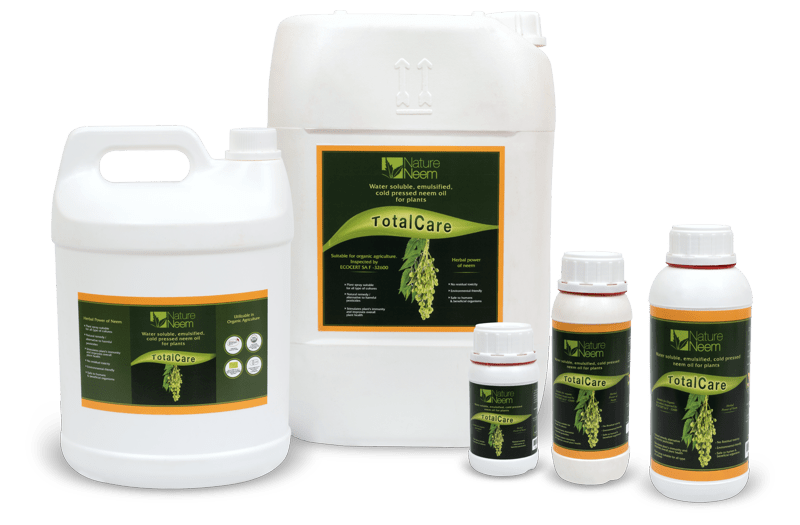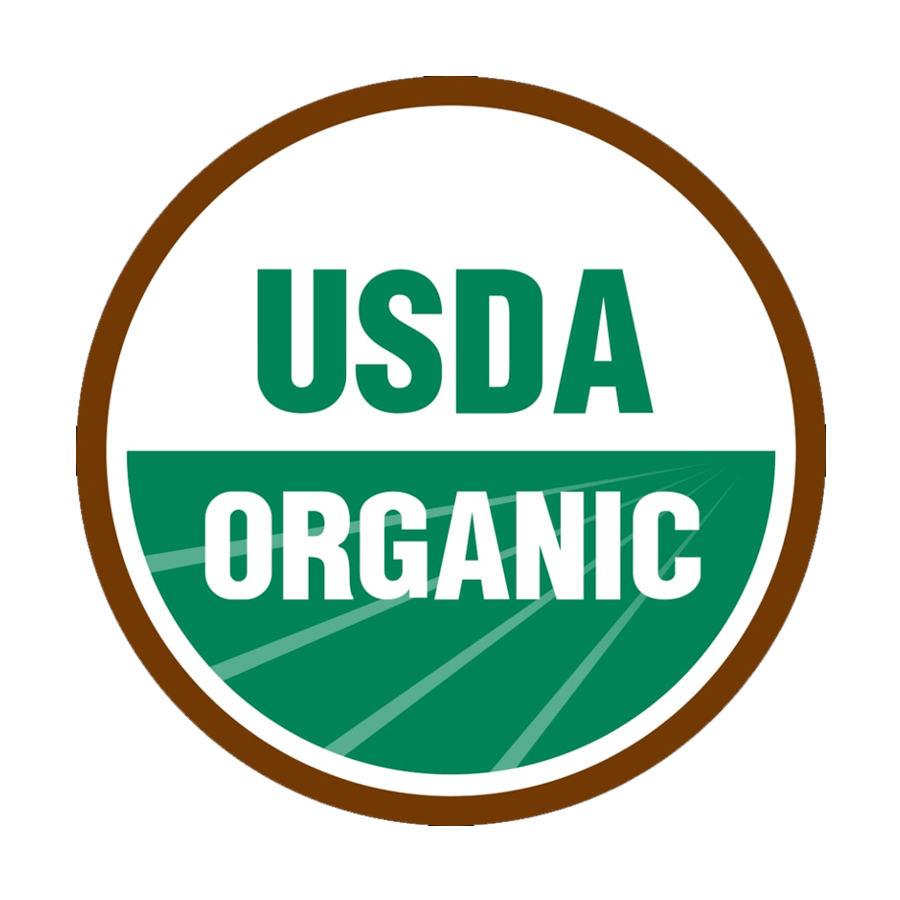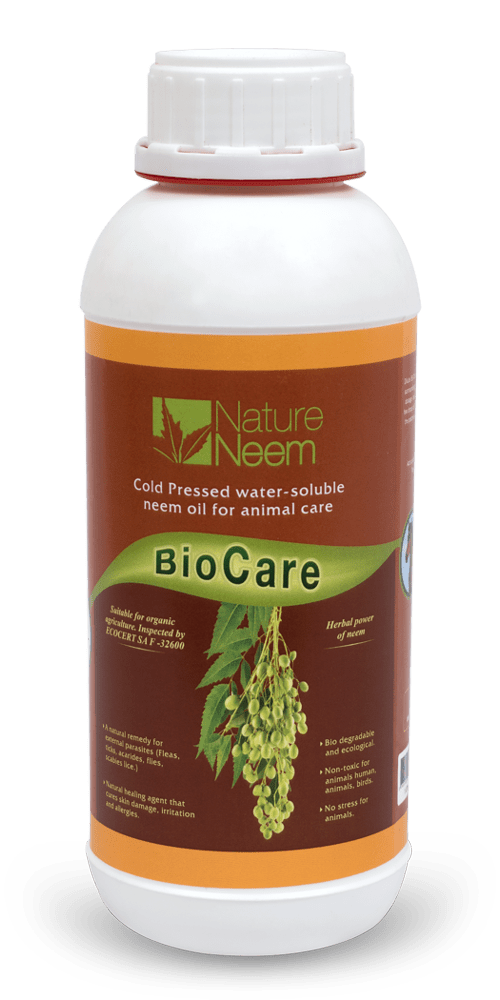
Neem Öl
Biologische Alternative zu industriellen Pestiziden
Eine neue Ära in der Schädlingsbekämpfung.
Landwirtschaft
In der Landwirtschaft werden Neem-Öl, Frucht und die unterschiedlichen durch Produkte wie Samen Kuchen als Bio-Pestizide, Fungizide und organische Dünger verwendet. Wissenschaftler sehen vor, dass Neem Tree eine neue Ära in der Schädlingsbekämpfung zu schaffen und damit zu lösen andere ökologische Probleme, die den Globus. Vor kurzem wurde eine Reihe von Agro-chemische Unternehmen haben das Potenzial von Neem erkannt und es hat ein wachsendes Interesse gegenüber Neem als eine organische Alternative zu industriellen Pestiziden.
Neem als…
Neem als Bio-Pestizid
Die Bedeutung von Neem als Bio-Pestizid wurde von der modernen wissenschaftlichen Gemeinschaft realisiert, so früh wie 1959, als ein Deutscher Wissenschaftler im Sudan festgestellt, dass Neem der einzige Baum, der Grün blieb während einer Wüstenheuschrecke Pest war. Literaturen bestätigen, dass Neem effektiv loswerden kann über 200 Schädlingsarten, die Pflanzen betrifft. Die Pestizid Eigenschaften von Neem ist weitgehend auf Azadirachtin gefunden in den Neem Extrakten zurückzuführen, die ein Wachstumsregulator und sowie eine leistungsfähige Fütterung und oviposition Abschreckung ist. Azadirachtin ist nicht flüchtig und ein Insekt kann es nicht durch Geruch verhindern, sondern muss es schmecken, um darauf zu reagieren. Ein Geschmack von Azadirachtin stimuliert mindestens eine “abschreckende Neuron” in Insekten, die Zeigen, ein Anti-Futtermittel Antwort. Die Stärke der “Abschreckungs Neuron” Antworten wurde mit der Stärke der Anti-korreliert Futtermittel Antworten. Neem-Öl kann auch ersticken Milben, weiße Fliegen, Blattläuse und andere Arten von weichem Körper Insekten auf Kontakt. Also Es ist klar, dass Neem nicht auf Kontakt zu töten, sondern es hemmt Fütterung und Reproduktion der Schädlinge. Diese vielfältigen Wirkungsweisen machen es unwahrscheinlich, dass Insekten und Pflanzenpathogene Resistenz gegen Neem entwickeln können. Auch bestimmte Schädlinge wie Floral Thripse, Diamant-Rücken Motten und mehrere Blatt Bergleute, die Resistenz gegen die anorganischen Pestizide zu entwickeln oder die inhärent Schwer zu kontrollieren mit herkömmlichen Pestiziden sind effektiv kontrolliert oder verwaltet mit Neem.
Die Emulgierbares Konzentrat (EC) von Neem
Die emulgierbares Konzentrat (EC) von Neem, das hauptsächlich vom Neem-Öl vorbereitet wird, wird als das Pestizid der Wahl in der organischen Landwirtschaft verwendet. Es gehört zur Kategorie der Pestizide mittlerer bis breites Spektrum. Unter den anderen bekannten Botanischen Pestiziden wie Rotenone und Pyrethrine, Neem wird gefunden, um übergeordnetes wegen einer Anzahl von Gründen zu sein. Es ist auch kompatibel mit einer Liste von anderen synthetischen Pestiziden, die ihre Verwendung als Bestandteil der Integration Schädlingsbekämpfung (IPM) ermöglicht. Sind unten die Gründe, zu erklären, warum Neem scheint, am besten zu sein und nicht-Austauschbar Komponente von IPM
-
Neem-Pestizid ist ein natürliches Produkt, absolut nicht giftig, 100% biologisch abbaubar und Eco-Friendly.
-
Es ist für das Mischen mit anderen synthetischen Pestiziden geeignet und in der Tat erhöht ihre Wirkung.
-
Es muss keine oder geringere Menge synthetischer Pestizide verwendet werden, wodurch die Umweltbelastung verringert wird.
-
Mehrere synthetische Pestizide als einzelne chemische Verbindungen verursachen einfache Entwicklung resistenter Arten von Schädlingen. Neem besteht aus einigen Verbindungen folglich Entwicklung des Widerstandes ist unmöglich.
-
Neem zerstört nicht natürliche Raubtiere und Parasiten der Schädlinge dadurch, die diesen natürlichen Feinden erlauben, einen Scheck auf der Schädling-Bevölkerung zu halten.
-
Neem hat auch systemische Tätigkeit und Sämlinge können absorbieren und akkumulieren die Neem-Verbindungen, um die ganze Pflanze schädlingsresistent zu machen.
-
Neem hat ein breites Wirkungsspektrum, das auf mehr als 200 Arten von Schädlingen aktiv ist.
-
Neem ist harmlos zu nicht Ziel und Nutzorganismen wie Bestäuber, Honigbienen, Säugetiere und andere Wirbeltiere.
Art der Anwendungen von Neem-Pestizid
Die Art der Anwendungen, die Dosierungen und die Punkte, die während der Anwendung zu beachten sind, werden im Produktbereich dieser Website ausführlich erläutert. Jedoch die EC-Formulierungen werden meist als Luft Sprays eingesetzt. Es wird auch als Boden Tränken zu einigen Pflanzenarten angewendet, die Verlagerung es durch das pflanzliche Gewebe. Neem kann effektiv in Hydrokulturen, Aeroponik, Gewächshäusern, Schatten Häusern, Zierpflanzen, innen-verwendet Scapes, Gartenbau, Landschaften, Baumschulen, Torf Farmen, Sträucher, blühende Sträucher, Früchte und Nussbäume.
Wie Neem arbeitet als Pestizid
Als Insekten Wachstumsregulator
Es ist eine sehr interessante Eigenschaft der Neem Produkte und einzigartig in der Natur, da es auf juveniles Hormon arbeitet.
Die Insekten Larve füttert, wenn es Wächst und es wirft die alte Haut und wieder beginnt zu wachsen. Diese besondere vergießen der alten Haut ist das Phänomen der Ecdysis oder Mauser wird von einem Enzym Ecdysone regiert. Wenn die Neem-Bestandteile, besonders Azadirachtin in den Körper der Larven eintreten, ist die Tätigkeit von Ecdysone Unterdrückt und die Larve nicht zu Häuten, bleibt in der Larven Phase und stirbt schließlich. Wenn die Konzentration der Azadirachtin nicht ausreicht, gelingt es der Larve, die Puppenbühne zu betreten, aber stirbt in dieser Phase und wenn die Konzentration noch weniger der Erwachsene aus der Puppe ist 100% falsch, absolut steril ohne Kapazität für Reproduktion.
Als ovipositional Abschreckung
Eine andere Möglichkeit, wie Neem Schädlinge reduziert, besteht darin, das Weibchen daran zu hindern, Eier zu legen
Diese Eigenschaft ist bekannt als Oviposition Abschreckung und kommt in sehr handliches, wenn die Samen in der Lagerung mit Neem-Kern Puder und Neem-Öl beschichtet werden. Die Samen oder Körner, die vom Markt gewonnen werden, sind bereits mit einigen Insekten verseucht. Sogar diese Körner konnten mit Neem Samen Kern Extrakt oder Neem-Öl behandelt werden; nach dieser Behandlung werden die Insekten nicht auf Sie zu ernähren. Es wird keine weiteren Schäden an den bereits beschädigten Körnern geben und gleichzeitig, wenn das Weibchen zur Eiablage Zeit seines Lebenszyklus kommt, wird die Eiablage verhindert.
Als Fütterung Abschreckung
Die wichtigste Eigenschaft von Neem ist Fütterung Abschreckung.
Wenn eine Insektenlarve auf dem Blatt sitzt, ist die Larve Hungrig und es will auf dem Blatt zu ernähren. Dieser besondere Auslöser der Fütterung ist durch die Kiefer Drüsen geben einen Auslöser gegeben, Peristaltik in den Verdauungskanal beschleunigt wird, die Larve hungrig fühlt und seine beginnt Fütterung auf der Oberfläche des Blattes. Wenn das Blatt mit Neem Produkt behandelt wird, wegen der Anwesenheit von Azadirachtin, Salanin Und Melandriol Es gibt eine Anti-Schlauchwelle im Verdauungskanal und dies erzeugt etwas ähnliches wie Erbrechen Empfindung im Insekt. Wegen dieser Empfindung ernährt sich das Insekt nicht auf der Neem behandelten Oberfläche. Seine Fähigkeit zu schlucken ist auch blockiert.
Andere Pestizid Aktivitäten umfassen
- Die Bildung von Chitin (Skelett) wird ebenfalls gehemmt.
- Paarung sowie sexuelle Kommunikation wird gestört.
- Larven und Erwachsene von Insekten werden abgestoßen.
- Erwachsene werden sterilisiert.
- Larven und Erwachsene werden vergiftet.
Neem als Bio-Fungizid
Als Fungizid, Neem-Öl ist vor allem als vorbeugende verwendet und wenn Krankheit ist gerade erst zu zeigen. Es Mäntel die Blattoberfläche, die wiederum verhindert die Keimung der Pilzsporen. Neem-Öl ist wirksam gegen Fäulnis, Mehltau, Roste, Schorf, Blatt Fleck und Knollenfäule.
Neem Oil Spray gefunden, um den Pilz auf einem schwer infizierten Sack Boden zu töten!
Neem-Basis organische Dünger unterdrückt Wurzel verrottet.
Neem als Nematizid
Der hohe Azadirachtin-Gehalt im natürlichen Neem-Kuchen trägt dazu bei, die Pflanzen vor parasitären (schädlichen) Nematoden zu schützen. Die chemische Bekämpfung von Nematoden ist vor allem für kleinere Bauern sehr kostspielig und schädlich für Luft, Boden und Wasser. Unser Neem-Samenkuchen (Neem-Seed-Cake) hat sich als ein sehr wirksames, natürliches Pflanzenschutz-Produkt erwiesen. Zusätzlich hat sich der Einsatz von Neem-Samen-Kuchen zur Kontrolle von Wurzelknoten-Nematoden als überaus positiv gezeigt. Forschungsstudien haben bestätigt, dass Neemsamen-Kuchen oder Neem-Extrakt natürlich und vor allem wirksam, Helicotylenchus erythrina, Meliodogne Aarenaria, Meloidogyne Incognita, Pratylenchus sp, Haplolaimus Indicus M bekämpfen kann. Javanika (Wurzelknoten-Nematoden in Gemüsekulturen wie Okra, Chilli, Bohnen, Tomaten, Aubergine, etc.), Parasitäre Pilze, R. Brassica, Reniformer Nematode, Rodopholus Similis (Banane) Trylenchor Hynchus etc. Auf Mauritius verwenden die Biobauern unser Neemsaatgut-Pulver zum Schutz der Bananen, um die Nematoden zurückzudrängen. Eine große Bedrohung in der Bananenzucht. Sie versichern uns, dass sich, sowohl die Qualität, als auch das Aussehen der Bananen deutlich verbessert haben. Im französischen Burgund verwenden die Winzer das Neem-Saatgut-Pulver zur Desinfektion des Bodens gegen Schimmelbildung. In Italien kauft ein großes organisches Düngemittel-Unternehmen unser Produkte, um seine Pflanzen-Anbau-Methoden zu optimieren. Sie bestätigen, dass unsere Neem-Produkte die Setzlinge in den frühen Phasen der Pflanze schützen, insbesondere gegen den Nematoden-Befall.
Neem in Bodenmanagement und Pflanzenernährung
Neem als Bodenverbesserer und organischer Dünger
Neem Cake, das Nebenprodukt in den Prozess der Kaltpressung von Neem Früchten und Kernen gewonnen wird als organischer Dünger verwendet. Es hat ausreichende Quantität der NPK in der organischen Form für das Pflanzenwachstum. Neem-Kuchen enthält in der Regel etwa 6% Neem-Öl und min. 4% Stickstoff, 0,5% Phosphor und 0,5% Kalium. Wird vollkommen pflanzliches Produkt Es enthält 100% natürlicher NPK Inhalt und andere essentielle Mikronährstoffe. Es ist reich an Schwefelverbindungen und bitter Limonoide. Bitte melden Sie sich im Produktbereich dieser Website, um in Details die Nährstoffe, die in Neemsamen Kuchen vorhanden sind. Entsprechend Forschung Berechnungen, Neem-Kuchen scheint, Boden fruchtbarer zu bilden wegen einer Zutat, die Bodenbakterium von der Umwandlung der stickstoffhaltigen Verbindungen in Stickstoffgase blockiert. Es ist ein Nitrifikationsinhibitor und verlängert die Verfügbarkeit von Stickstoff sowohl für kurze Dauer als auch für lang Zeit Kulturen. Es wirkt auch als natürlicher Dünger mit Pestizid Eigenschaften. Neem Cake Bio-Dünger schützt pflanzliche Wurzeln vor Nematoden, Boden Larven und weißen Ameisen wahrscheinlich aufgrund seines Inhalts der Rest Limonoide. Neem-Kuchen wird in Indien weit verwendet, um Paddy, Baumwolle und Zuckerrohr zu düngen. Es ist harmlos für Regenwürmer-in der Tat Wurm Populationen sind bekannt, dass in Parzellen mit Neem-Kuchen behandelt zu wuchern.
Neem als Dünger Effizienzverbesserung Produkt
Neem wird nur langsam zerlegt und führt zu eine langsamere Freigabe der Nährstoffe, die darin enthalten werden. Die langsame Freisetzung von Nährstoffen wird auf die Anwesenheit der verschiedenen Extraktions Prinzipien in Saatgut und Kuchen zurückgeführt und diese Extractives werden als Belohnung für stickstoffhaltige Düngemittel wie Harnstoff verwendet. Es wird geschätzt, dass aus der Gesamtmenge des Harnstoff auf die Kulturen angewendet, etwa 50-70% in verschiedenen Formen verloren geht, wodurch die Verfügbarkeit von Stickstoff zu Pflanzen. Es gibt eine Alter alt Praxis in Indien der Verschmelzung Neem Kuchen mit Harnstoff. Wenn Neem-Kuchen mit Harnstoff gemischt wird, bildet es eine feine Schicht und schützt den Verlust des Stickstoffs durch Denitrifikation Sicherstellung regulierte ununterbrochene Verfügbarkeit des Stickstoffs für einen längeren Zeitraum, wie pro die Anforderung der ernten. Neem Seed Cake stimuliert auch die Phosphor Aufnahme leicht, hatte aber keinen Einfluss auf die Kaliumaufnahme.
Neem Seed Cake Pulver
Belohnung für stickstoffhaltige Düngemittel, die eine langsame Freisetzung von Stickstoff gewährleisten
Neem in der Erntekontrolle
In den Tropen ist ein Großteil der geernteten Lebensmittel während der Lagerung verloren. Mehr wohlhabende Landwirte können und tun Sprühen ihre gelagerten Nahrungspflanzen mit chemischen Pestiziden, um Würmer, Käfer und andere parasitäre Erkrankungen zu verhindern. Neem bietet die verarmten Landwirte und sogar wohlhabende Landwirte, die Pestizide durch eine natürliche und preiswerte Alternative ersetzen wollen. Eine leichte Beschichtung von Neem-Öl-oder Kern Pulver schützt gespeicherte Nahrungspflanzen für bis zu zwanzig Monate vor allen Arten von Befall ohne Verschlechterung oder Verlust der Schmackhaftigkeit. Sogar heute im ländlichen Indien, speichern Leute ihre Körner, die mit getrocknetem Neem gemischt werden. Neem schützt nicht nur, aber verhindert auch die weitere Vermehrung des Speicher Schädlings, wenn er bereits die Körner verseucht hat. Die Insekten stoppen Fütterung auf Sie durch die Anti-Fütterung Eigentum Neem. Auf der anderen Seite verhindert die oviposition Abschreckung von Neem die weiblichen Insekten von der Verlegung des Eies während seiner Eiablage Zeit seines Lebenszyklus.

Zertifizierung
TotalCare ist geeignet als organischer Input wie pro die folgenden organischen Standards.
-

Nation organic Program (NOP)
von USDA
Input für den biologischen Landbau geeignet und konformes Product under NOP.
-

European Commission standards
(EC)
Eingänge geeignet für den Einsatz in organic Bewaffnung, gemäß (EC)
n° 834/2007 & 889/2008 den Vorschriften
-

Inspected
Von Ecocert SA F-32600
Produkt zur Beseitigung von Insekten und anderen Schädlingen in Gebäuden und anderen Einrichtungen, in denen Vieh gehalten wird.








